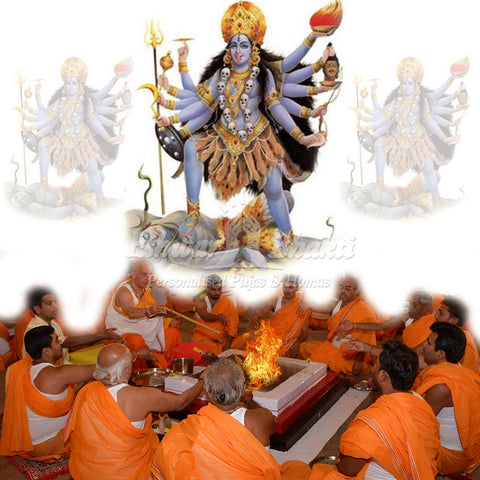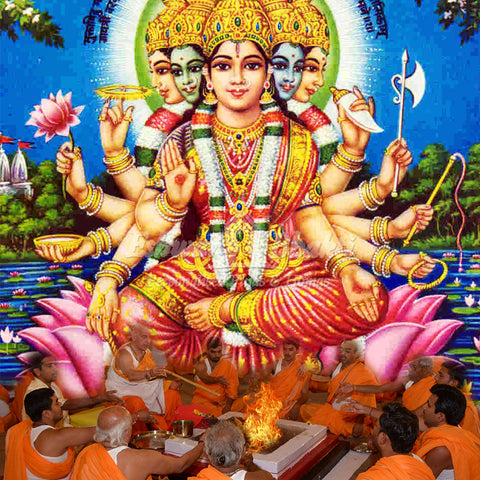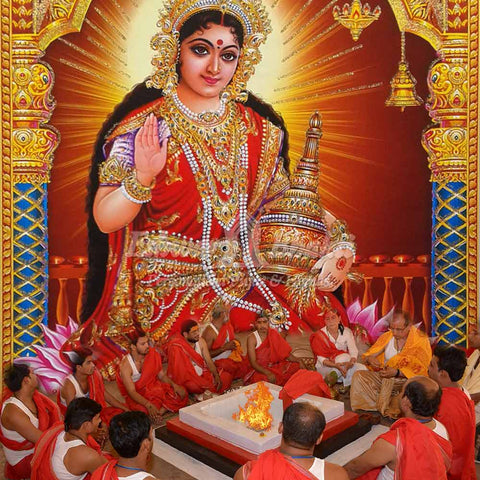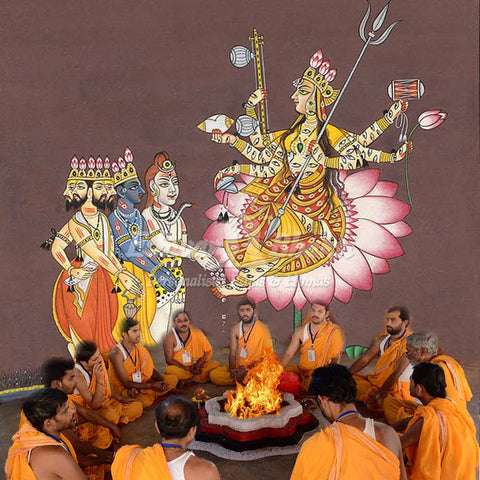Aarti
Aarti is the ceremony of lights. The “Aarti” is one of the most important Hindu religious rituals of worship. It is a prayerful ceremony performed to please the Divine Lord after finishing the prayers or auspicious rituals. The aarti ceremony is said to have descended from the ancient Vedic period which means “Aart- Nivaran” means the removal of sorrows or “Aa + rati” meaning complete love towards God. It is sung and performed with a deep sense of gratitude and love.
The holy river Ganga (giver of life, purity, bliss and liberation in Her waters) is truly a Divine Mother for millions of Indian and the Ganga Aarti /divine light ceremony which is filled with bhajans. prayers at Varanasi is a divine ritual. Participating in the 1000 years old Ganga aarati at Varanasi, Haridwar, and Rishikesh is a splendid experience. Every evening thousands of Hindu devotees gathers on the bank of this holy river to participate in the aarti ceremony and to take blessings of Goddess Ganga.

Practice: In general, Aarti is performed at the end of the prayers or auspicious rituals. It is performed to rectify any mistakes made during the whole process, to please the Celestial God, and to take divine blessings from God. It is a hymn or a song in praise to God as well as to illuminate our mind from worldly thoughts.
The ‘ceremony of light’ or the aarti is mostly performed by sadhus (Hindu monks) and pujaris (attendants to the Deities) in the temple and by the devotees at their homes. It involves waving 3/5/7 odd numbers of ghee-soaked lighted wicks from the head to toe of the Deity’s while chanting Vedic mantras or singing a prayer or a hymn. Some devotees use camphor instead of wicks or a lamp.
Important factors to follow while doing the Aarti:
• Wear clean washed clothes.
• Offerings of fruits, leaves, and flowers.
• Blowing the conch.
• Lighting the lamp and rotating with deep faith.
• Aarti should be waved in clockwise manner around the deity.
• The performer needs to sung the prayer with the emotion (bhava) that God Himself is standing in front and he/she calling out to Him faithfully.
• Bow down with reverence (total surrender).
After the Aarti is completed, the lighted wicks are passed around the congregation to move their hand over the lamp and then over their head and face to receive the blessings infused within the flames. It is believed that the flames of the aarti purifies the gross and subtle bodies and energises for a faster spiritual evolution.
Almost all temples or Hindu shrines in India perform aarti with a joyful meditative song or a prayer with an accompaniment of musical instruments, like dhol (drums), bells, veena, table, and a conch-shell, etc. The priest also rings a small hand-bell with his left hand while chanting the prayer and waving the wicks with his right hand.
Significance: Waving of lighted lamps before an idol with Bhajana (Prayer) is called Aarti. The custom of aarti acts as a total surrender to God to overcome any worldly desire or misery. Since ages, according to the guidelines of “Sanatan Dharma”, mortals have been following many rituals like “Home”, “Yajna”, “pooja” in search of peace and wellbeing. This is true that praising God with your deepest faith will make you have your wishes fulfilled. So, the aarti is connected to all Hindu rituals, and it has profound spiritual sentiments underlying it.
• Aarti serves as a reminder to stay vigilant so that the worldly thoughts, achievements, and desires cannot overcome the mind. Just as the small lighted lamp chases away the darkness of that place.
• It reminds the selfless love towards God and to every living being by chanting the mantras and praising God, the creator of the world.
• Hand movements over the flame generate a faith that the blessing of God is always with us.
• The ghee soaked lighted wicks / camphor burns itself out completely but emits a fragrance on the place of aarti. It reminds us the idea of "offering sacrifices" for the good of others.
• The ‘Aarti’ gives opportunity to every individual to show their gratitude towards the almighty God, who is the creator and operator of this beautiful cosmos.
Hindu shrines are usually performing aarti five times a day, assuming that each aarti is related to a specific part of the Deities’ routine. The five most common aartis are:
Mangal Aarti : Before sunrise - When God wakes up, the priest/monk opens up the “Garva Gruha” for the first look of the God and for an auspicious beginning.
Shangar Aarti : Early Morning - After dressing up God and for the darshan of the visitors.
Rajbhog Aarti : Midday - After offering the midday meal which is the main meal of the day.
Sandhya Arati : At Sunset - After Special Prayer in the evening with the devotees. It is the most popular among all aartis.
Shayan Aarti : Late evening - Final aarti at the end of the day to praise The God for giving a wonderful day and upcoming peaceful night.
Sanatan Dharma explains, 33 crores of God and Goddess come for the darshan (to see) “The Celestial God” and to participate during the aarti. And thus, aarti as a divine form of worship. There are different songs for different Gods and Goddess to celebrate the ritual of aarti. Aarti can be simple to extravagant depends on the devotees and to their tradition, but always includes flame or light. Hindu devotees sing “Om Jai Jagdish Hare”, one of the oldest and widely sung Bhajan (prayer) during aarti is devoted to all or any gods and goddesses.
Most commonly, the Aarti is performed by waving lighted wicks (soaked in ghee) or by lighted camphor/diya/lamp before the idol (murti of God) accompanied by various musical instruments, mantra, expressive songs that praises The God. Most Hindu shrines, big and famous temple performs aarti five times a day and almost all Hindu devotees perform aarti two times a day at their homes, in the morning and the evening.




